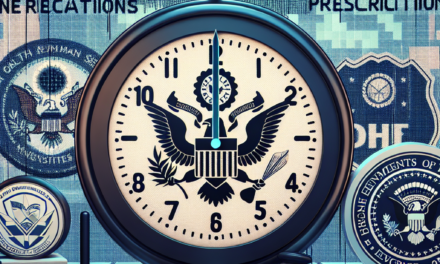UnitedHealth to Engage in Mediation with DOJ Regarding Amedisys Acquisition
The healthcare landscape in the United States is undergoing significant transformations, driven by mergers and acquisitions that aim to streamline services and improve patient care. One of the most notable recent developments is UnitedHealth Group’s proposed acquisition of Amedisys, a leading provider of home health care services. However, this acquisition has drawn scrutiny from the Department of Justice (DOJ), leading to UnitedHealth’s decision to engage in mediation. This article delves into the implications of this acquisition, the regulatory challenges involved, and the broader context of healthcare mergers and acquisitions.
Understanding the Acquisition: UnitedHealth and Amedisys
UnitedHealth Group, one of the largest healthcare companies in the U.S., has been on a growth trajectory, expanding its services through strategic acquisitions. Amedisys, known for its high-quality home health care services, presents a valuable addition to UnitedHealth’s portfolio. The acquisition aims to enhance UnitedHealth’s capabilities in providing integrated care, particularly in the growing home health sector.
Amedisys operates over 500 locations across the United States, offering services such as skilled nursing, physical therapy, and hospice care. The company has garnered a reputation for its patient-centered approach, which aligns with UnitedHealth’s mission to improve healthcare outcomes. By acquiring Amedisys, UnitedHealth seeks to leverage its resources and expertise to expand its reach in the home health market, which is projected to grow significantly due to an aging population and increasing demand for at-home care services.
However, the acquisition has raised concerns regarding market competition and potential monopolistic practices. The DOJ’s scrutiny reflects a broader trend of regulatory oversight in healthcare mergers, aimed at ensuring that such consolidations do not harm consumers or stifle competition.
The Role of the Department of Justice in Healthcare Mergers
The DOJ plays a critical role in regulating mergers and acquisitions in the healthcare sector. Its primary objective is to prevent anti-competitive practices that could lead to higher prices, reduced quality of care, or limited access to services for consumers. The DOJ evaluates proposed mergers based on several factors, including market share, the potential for monopolistic behavior, and the overall impact on consumer welfare.
In the case of UnitedHealth’s acquisition of Amedisys, the DOJ is likely assessing the following:
- Market Concentration: The DOJ examines how the merger would affect market concentration in the home health care sector. A significant increase in market share could lead to reduced competition, which may result in higher prices for consumers.
- Impact on Quality of Care: The DOJ considers whether the merger would negatively impact the quality of care provided to patients. If the acquisition leads to cost-cutting measures that compromise patient care, it could raise red flags for regulators.
- Access to Services: The DOJ evaluates whether the merger would limit access to home health services for certain populations, particularly vulnerable groups who rely on these services.
- Innovation and Investment: The DOJ assesses whether the merger would stifle innovation in the healthcare sector. A lack of competition can lead to reduced investment in new technologies and care models.
- Public Sentiment: The DOJ may also consider public opinion and stakeholder feedback regarding the merger, as community concerns can influence regulatory decisions.
The DOJ’s involvement in healthcare mergers is not new. Over the past few years, there has been an increasing trend of regulatory scrutiny, particularly as the healthcare industry consolidates. High-profile cases, such as the failed merger between Aetna and Humana, highlight the challenges that companies face when attempting to merge in a highly regulated environment.
The Mediation Process: What to Expect
In response to the DOJ’s concerns, UnitedHealth has opted for mediation as a means to address regulatory issues surrounding the acquisition. Mediation is a voluntary process that allows both parties to negotiate and reach a mutually acceptable resolution without resorting to litigation. This approach can be beneficial for both UnitedHealth and the DOJ, as it provides an opportunity to explore potential compromises and solutions.
The mediation process typically involves the following steps:
- Selection of a Mediator: Both parties will agree on a neutral third-party mediator who has expertise in healthcare regulations and mergers.
- Preparation: Each party will prepare their case, outlining their positions, concerns, and desired outcomes. This preparation may involve gathering data, expert opinions, and legal arguments.
- Mediation Sessions: The mediator will facilitate discussions between UnitedHealth and the DOJ, encouraging open communication and collaboration. The goal is to identify common ground and explore potential solutions.
- Negotiation of Terms: If both parties can reach an agreement, they will negotiate the terms of the resolution, which may include divestitures, behavioral remedies, or other commitments to address regulatory concerns.
- Final Agreement: Once an agreement is reached, it will be formalized in a legal document, which may require approval from the DOJ and other regulatory bodies.
Mediation can be a more efficient and less adversarial approach compared to litigation, allowing both parties to maintain a working relationship. For UnitedHealth, successfully navigating the mediation process could pave the way for the acquisition to proceed, while for the DOJ, it offers an opportunity to ensure that consumer interests are protected.
Implications for the Healthcare Industry
The outcome of UnitedHealth’s mediation with the DOJ could have far-reaching implications for the healthcare industry as a whole. Mergers and acquisitions are a common strategy for companies seeking to expand their services and improve efficiencies. However, regulatory scrutiny can create uncertainty and impact future consolidation efforts.
Some potential implications include:
- Increased Regulatory Oversight: A successful mediation could signal to other companies that regulatory bodies are willing to engage in constructive dialogue, potentially leading to more mergers being approved with conditions.
- Market Dynamics: The outcome could influence market dynamics in the home health sector, affecting competition, pricing, and service availability. If UnitedHealth is allowed to proceed with the acquisition, it may set a precedent for other large healthcare companies seeking similar consolidations.
- Consumer Impact: The resolution of this case will ultimately affect consumers. If the merger leads to improved services and care coordination, it could benefit patients. Conversely, if it results in reduced competition, consumers may face higher costs and fewer choices.
- Future Mergers: The outcome may also impact future mergers in the healthcare sector. Companies may be more cautious in pursuing acquisitions if they perceive a high likelihood of regulatory challenges.
- Innovation and Investment: Depending on the terms of the mediation, the acquisition could either foster innovation through increased investment or stifle it by creating a less competitive environment.
As the healthcare industry continues to evolve, the implications of this mediation will be closely watched by stakeholders, including investors, healthcare providers, and policymakers. The outcome could shape the future of healthcare delivery in the U.S., particularly in the home health sector.
Case Studies: Previous Healthcare Mergers and Their Outcomes
To better understand the potential implications of UnitedHealth’s acquisition of Amedisys, it is helpful to examine previous healthcare mergers and their outcomes. Several high-profile cases provide insights into how regulatory scrutiny can impact mergers and the subsequent effects on the industry.
One notable example is the attempted merger between Aetna and Humana in 2016. The DOJ filed a lawsuit to block the merger, citing concerns about reduced competition in the health insurance market. Ultimately, the merger was abandoned, highlighting the challenges that large healthcare companies face when attempting to consolidate. The case underscored the importance of regulatory oversight in maintaining competition and protecting consumer interests.
Another significant case is the merger between CVS Health and Aetna, which was approved in 2018 after extensive negotiations with regulators. The DOJ required CVS to divest certain assets to address antitrust concerns. This case illustrates how companies can successfully navigate regulatory challenges by making concessions and demonstrating a commitment to consumer welfare.
Additionally, the merger between Cigna and Express Scripts in 2018 serves as another example. The DOJ approved the merger with conditions aimed at preserving competition in the pharmacy benefit management market. This case highlights the importance of regulatory oversight in ensuring that mergers do not harm consumers while allowing companies to achieve synergies and efficiencies.
These case studies demonstrate that while mergers and acquisitions can offer significant benefits, they also come with regulatory challenges that must be navigated carefully. The outcome of UnitedHealth’s mediation with the DOJ will likely draw on lessons learned from these previous cases, shaping the future of healthcare mergers in the U.S.
Conclusion: The Future of UnitedHealth and Amedisys
The decision by UnitedHealth to engage in mediation with the DOJ regarding its acquisition of Amedisys marks a critical juncture in the ongoing evolution of the healthcare industry. As companies seek to expand their services and improve patient care through mergers and acquisitions, regulatory scrutiny will continue to play a vital role in shaping these transactions.
The mediation process offers an opportunity for both UnitedHealth and the DOJ to address concerns related to competition, quality of care, and consumer access. The outcome will not only impact the future of UnitedHealth and Amedisys but also set a precedent for other healthcare mergers in the coming years.
As stakeholders closely monitor the developments in this case, it is essential to recognize the broader implications for the healthcare industry. The balance between fostering innovation and ensuring competition will remain a critical challenge as the sector continues to evolve. Ultimately, the goal should be to create a healthcare system that prioritizes patient care while promoting a competitive marketplace that benefits consumers.
In summary, the mediation between UnitedHealth and the DOJ represents a significant moment in the ongoing dialogue about healthcare mergers and acquisitions. The outcome will have lasting implications for the industry, shaping the future of healthcare delivery in the United States.





